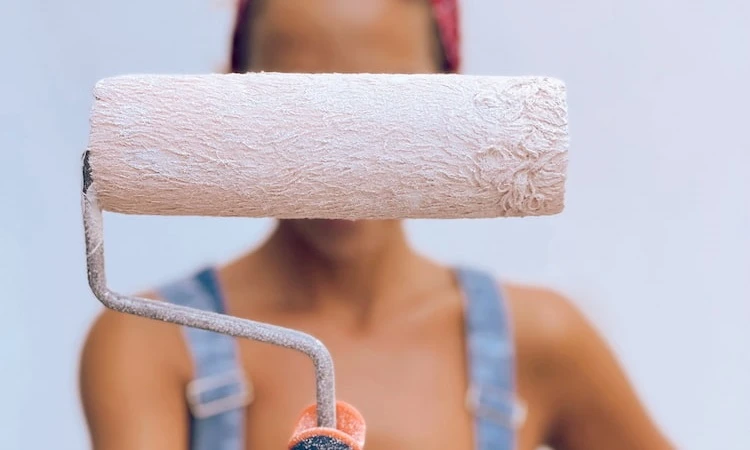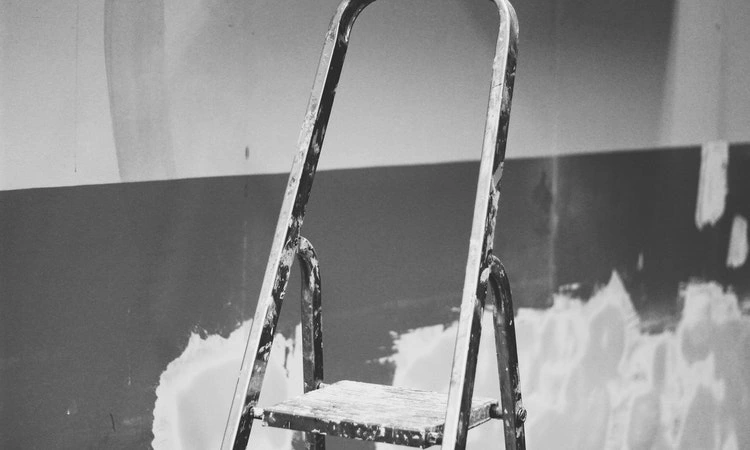You may be in the middle of a painting project, or maybe you are planning for a future project. Either way, at some point, you have wondered how long primer takes to dry.
On average, it can take 30 minutes to 1 hour for the primer to dry. However, some primers may take up to 8 hours to dry. And sometimes, professionals recommend waiting a full 24 hours before you apply paint.
Why is there a huge discrepancy in the times? Well, the drying time can be affected by the primer you use. It can also be affected by the surface you are painting on.
Now, you are probably wondering if there is any way you can speed up that drying time, right?
Luckily for you, there are some things you do. In this article, I will explain the different drying times based on the paint and surface you are working with.
I will also give you some tips on how to speed up that drying time.
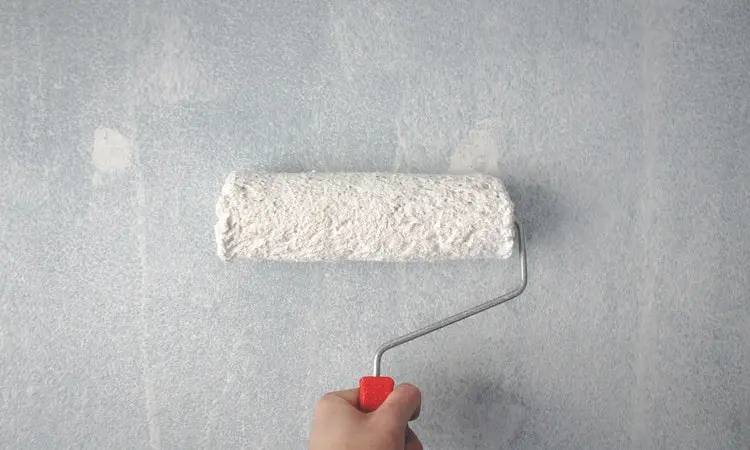
Why Should You Let Primer Dry Before Painting?
You must let primer dry before applying paint, no matter what surface you work with.
If you apply paint while the primer is still drying, you risk the paint wrinkling.
The paint may also form obvious streaks when painted on wet primer.
How Long Does Primer Take to Dry?
Different types of primers dry at different speeds. Water-based primers, such as latex primers, will dry faster than oil-based primers.
In general, primers can be dry within 30 minutes to 8 hours. Keep reading to find out which type of primer dries fastest.
Oil-Based Primer Drying Time
Oil-based primers dry within 6 to 8 hours. They dry faster than oil-based paints, but they are still the slowest drying primer.
Oil-based primers should be used when you are painting with oil-based or latex paints.
These primers are a great option for porous surfaces such as wood.
The oil-based primers will seal pores allowing the paint to adhere to the surface better. They are also the best primer when it comes to covering up stains.
Latex Primer Drying Time
Latex primers can dry within 3 to 4 hours. Latex primers are known for evening-out surfaces.
This makes them one of the best paints for drywall. However, they do not cover up stains as well as oil-based primers.
Shellac Primer Drying Time
One of the fastest-drying primers is shellac primers. They can dry within as little as 45 minutes.
This primer can be used with oil-based and latex paints. It is great at blocking stains, and it is ideal for interior paint jobs.
Primer Drying Time on Different Surfaces
Different surfaces have different drying times when it comes to primer. Below is a brief chart showing the different surfaces and their drying time.
You should always read the label on the primer, as different brands may have different drying times.
| Surface | Drying Time |
|---|---|
| Wall | 30 minutes to 1 hour |
| Wood | 30 minutes to 8 hours |
| Drywall | 30 minutes to 1 hour |
| Metal | 10 minutes to 1 hour |
| Plastic | 1 hour |
| Concrete | 2 to 8 hours |
| Brick | 1 hour |
| MDF | 1 hour |
| Ceramic Tiles | Minimum of 1 hour |
| Vinyl | Minimum of 1 hour |
On Walls
Latex and shellac primers will dry on walls within 1 hour. However, many professionals recommend waiting at least 3 hours before applying paint or another coat of primer.
This allows the primer to dry thoroughly.
An oil-based primer will need approximately 8 hours to dry on a wall. Again, many professionals will recommend waiting longer before painting the wall.
If you use an oil-based primer, you will often have to wait 24 hours before painting the surface.
If the primer completely dries between coats, you decrease the risk of your paint streaking or mixing with the primer. You can speed up the drying process by ensuring you are in a well-ventilated room.
If you have stains or imperfections, you should use a primer before painting a wall. Primer helps hide imperfections on walls.
It can also be a huge time saver if you are covering up paint that is darker than the new paint.
On Wood
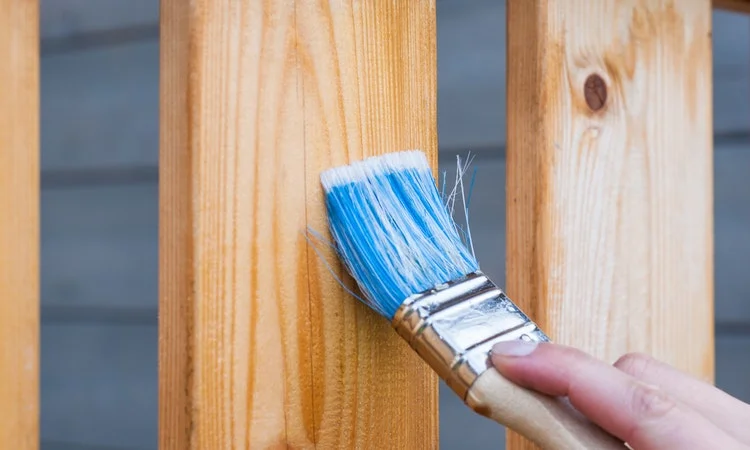
Oil-based primers are one of the better primers for wood, but it takes longer to dry. They can take up to 8 hours to dry on wood surfaces.
Latex paints, on the other hand, will dry within 30 minutes to an hour on wood surfaces.
Before priming wood, you should sand down the surface. This removes old paint and creates an even surface for the primer to adhere to.
Make sure the primer you choose is the same type as your paint. For example, if you choose an oil-based paint, then your primer should also be oil-based.
Once the primer has dried, you should sand the surface with 120-grit sandpaper. Suppose the grain of the wood is still visible repeat the process again.
Ensure you wipe off any dust that may be present after you have finished sanding it.
Primer is very important when you are painting wood surfaces. Wood is very porous, and without primer, it will absorb the paint. This, in turn, makes the paint appear faded and not as pigmented.
On Drywall
Very few people will be painting drywall in their homes. You are often painting over existing paint on your walls.
But if you went through a home renovation, you may be painting directly on drywall. In that case, it is very important to prime the drywall.
The primer ensures the paint will adhere to the surface of the drywall. It will ensure the paint is unaffected by temperature changes in the room.
Most primers will be dry to the touch within 30 minutes, but some can take up to 1 hour to dry.
Some people recommend letting the primer dry for 24 hours before painting. This allows ample time for the primer to cure.
Make sure you sand the drywall before applying the primer. Even though drywall is new, it can still be covered in scruffs and scratches.
You will rarely need more than one coat of primer on drywall. Since it is a new material and has not been exposed to water or anything that can cause staining, you should only need one coat of primer.
You also do not need to use a stain-fighting primer.
On Metal
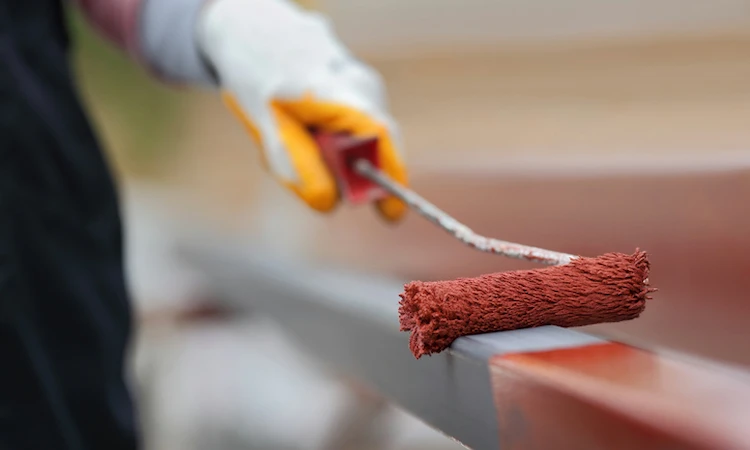
When painting metal, most professionals recommend using a self-etching primer. This primer is designed for metal.
It allows the paint to stay on the metal instead of peeling off. Most self-etching primers will dry to the touch within 10 minutes.
You should wait at least an hour before applying another coat if one is required. Self-etching primer is not an easy product to work with.
You will have to wear a respirator, goggles, and heavy-duty gloves.
You should apply this primer to the metal in several thin layers. You can apply the primer in a sweeping motion.
Before you prime the surface, ensure you have removed any rust that has previously formed on the metal.
If the metal is going outside, you should apply two layers of primer. This will help prolong the metal’s life as it will be less prone to oxidation.
The most important thing when choosing a primer for metal is to choose one with a self-etching component.
What Affects Primer Drying Time?
You already know that different primers and the surface you are priming can affect the drying time. But are there other outside factors?
The thickness of the coats you apply, the ventilation, the temperature, and the humidity can all affect the drying time of primer.
The Thickness of Coats
More is not always better, especially when it comes to drying times. The thicker the coat of primer, the longer it will take to dry.
You should follow the manufacturer’s recommendations on how thick to apply the paint.
Is your wall covered in stains or drawings from your children? You may feel you need to apply copious amounts of primer, but you do not.
Many manufacturers recommend applying 1 to 2 thin layers of primer. Thinner coats will dry faster and will cover up stains better than heavy layers.
Proper Ventilation
Properly ventilating a room is beneficial for your health and your time. If the room is properly ventilated, the harsh fumes will be able to dissipate faster, and the paint will dry faster.
When a room is closed off, the air cannot circulate and dry the surface.
What if the area you are painting in does not have windows that can be opened to help ventilate? Luckily for you, there are some other things you can do to ventilate a room.
You can turn on a bathroom exhaust fan or use the exhaust fan on your range hood.
Temperature and Humidity
Many cans of primer will specify an ideal temperature and humidity for the primer to dry. Typically they recommend a temperature around 70 degrees F and 50% humidity.
A higher or lower temperature or humidity can cause the paint to dry slower or faster.
When painting inside your home, you should evaluate the temperature and humidity.
You should know that the temperature is not as important as the humidity. Primer can dry better on a cold and dry day versus a warm and humid day.
What Would Cause Primer Not to Dry?
It can be difficult for the primer to dry for several reasons. You may have applied thick layers; there could be too much humidity, poor ventilation, or something else.
One of the most common reasons primer does not dry is that you used a low-quality primer.
Do not worry; I will recommend some top primers later in this article. But first, let’s discuss the other issues that can cause the primer to not dry.
It is recommended to apply thin layers of primer. Thin layers allow the primer to dry faster.
When you apply thick, heavy layers, the primer will take significantly longer to dry. In some cases, it can take over 24 hours for the primer to dry.
High humidity means there is a lot of water in the air. If there is water in the air, how can you expect the solvents in the primer to evaporate?
You can’t. That is why most paint cans say to paint in low-humidity environments.
Poor ventilation can have dire effects on your health and the drying ability of your primer. Without proper ventilation, the solvent in the primer has nowhere to go.
They need proper air circulation to move the particles and allow the primer to dry.
Can You Speed up the Primer Drying Time?
It is possible to speed up the drying time of primer. However, most professionals will suggest you wait for the recommended time frame on the label.
This decreases the risk of painting before the primer is fully dry.
If you still want to speed up the drying time, below is a list of suggestions:
- Paint on a sunny day: If you are painting outside, apply the primer on a sunny day. The warmth from the sun will allow the paint to dry significantly faster.
- Use a fast-drying primer: Oil-based primers will not be the best option when you want to get a job done fast. You should look for a water-based primer or a primer that is advertised as fast-drying.
- Use a hairdryer: This works better for small projects. You can use a low heat setting and hold the hairdryer at least a foot away from the object you are working on. Paint with thin coats: Thin coats of paint will dry faster than thick coats.
- Keep humidity low: If it is too humid, try painting on another day. A dehumidifier can also be used if you do not have the option to paint another day.
What Happens if You Paint Over Primer Too Early?
Primer is applied to help paint better adhere to a surface. When you paint over primer before it dries, you risk the paint not properly adhering to the surface.
The primer can also mix with the paint as you apply it. This is not ideal when your primer and paint are different colors.
For example, imagine you used a white primer, and you are going to paint with a dark navy blue.
If you apply the navy blue before the white primer has fully dried, you could have a lighter shade than you originally planned.
Your paint can also develop streak marks when applied before the primer fully dries.
You can touch the primer in a nonobvious area to see if the paint is dry. The primer should not look wet or feel sticky when you touch it.
You can also test the paint on the primer in a nonobvious area. This allows you to see if the paint is streaking or mixing with the primer.
This is also a great time to determine if you like the color you are going to be using.
How Long to Wait Between Two Coats of Primer?
Most primers will not require two coats. However, if you are covering up bad stains or you applied the primer too thin, you will need a second coat.
Most manufacturers recommend waiting one hour between coats of primer.
It is important to wait until the primer is fully dry. The primer may be dry to the touch within 30 minutes, but it can take up to an hour for it to be fully dried. Therefore, you should wait the full hour.
Applying a second layer before the first is dry can cause obvious streaking. It can also make the second layer take longer to dry.
This occurs because not only does the top layer have to dry, but it also has to dry the layer underneath.
5 Best Fast-Drying Primers You Can Buy
You now know how long it takes primer to dry. You also know what can cause the primer to dry faster or slower.
And now you are probably wondering what the best primer to use is?
Luckily, I have found the top 5 fast-drying primers, and they are all available on Amazon.
1. Kilz All-Purpose Primer
Kilz all-purpose 2 primer is one of the best primers on the market.
It can be used on multiple surfaces, including drywall, wood, stucco, galvanized metal, and more.
It is a water-based primer, and you can apply a layer of paint within one hour of applying the primer.
This primer can be used on interior and exterior surfaces. It works with alkyd, oil, and water-based topcoats.
It also works as a sealant and stain blocker. You will not have to worry about old stains coming through if you use this primer.
2. Zinsser Bullseye Primer
Zinsser Bullseye primer will dry in as little as one hour.
The primer will be dry to the touch within 35 minutes, but you should wait an hour before applying another layer of paint.
You can use this primer with oil or latex topcoats.
This is a water-based interior and exterior primer. It can be used on any surface, and it has a mold and mildew protective film.
This primer can also cover up harsh stains on old paint and prevent the stain from seeping through the new paint.
3. Rust-Oleum Tinted Primer
Rust-Oleum’s gray-tinted primer is great for indoor and outdoor projects.
It can be used on wood, masonry, metal, unglazed ceramic, and plastic.
Within 30 minutes of applying this primer, it will be dry to the touch.
A gray-tinted primer can be beneficial if you are painting a dark color.
If you use a white primer, you may need to apply more coats of paint versus if you used a gray-tinted primer.
This specific primer will also block stains from coming through the new paint.
4. Kilz Adhesion Primer
If you are working with surfaces deemed difficult to paint, then Kilz adhesion primer is the best primer for you.
This primer can be used on tile, glass, fiberglass, plastic, metal, and more.
It is a latex primer used on interior and exterior surfaces.
This primer will be dry to the touch in 30 minutes. But just like any other primer, you should wait at least an hour before painting over the primer.
You can use alkyd, oil, or water-based paints as a topcoat for this primer.
5. Rust-Oleum Mold Blocking Primer
Mold and mildew can be tricky to cover up. Put your mind at ease by using Rust-Oleum’s mold-blocking primer.
This primer is designed to kill mold and mildew, along with the odor they produce.
It will also prevent the future growth of mold and other fungal organisms.
This primer will be dry to the touch in 30 minutes and ready for paint within one hour.
It is a white primer applied to wood, siding, masonry, and metal.
Verdict
Primer can take anywhere from 30 minutes to 8 hours to dry. It all dependent on the type of primer you use and the surface you are working on.
Thankfully, there are some things you can do to speed up the drying time if you cannot wait that long.
Regardless of what primer you use, you should wait until the primer is dry to begin painting.
Many primers may be dry to the touch but will require a longer time to dry and adhere to the surface fully.






